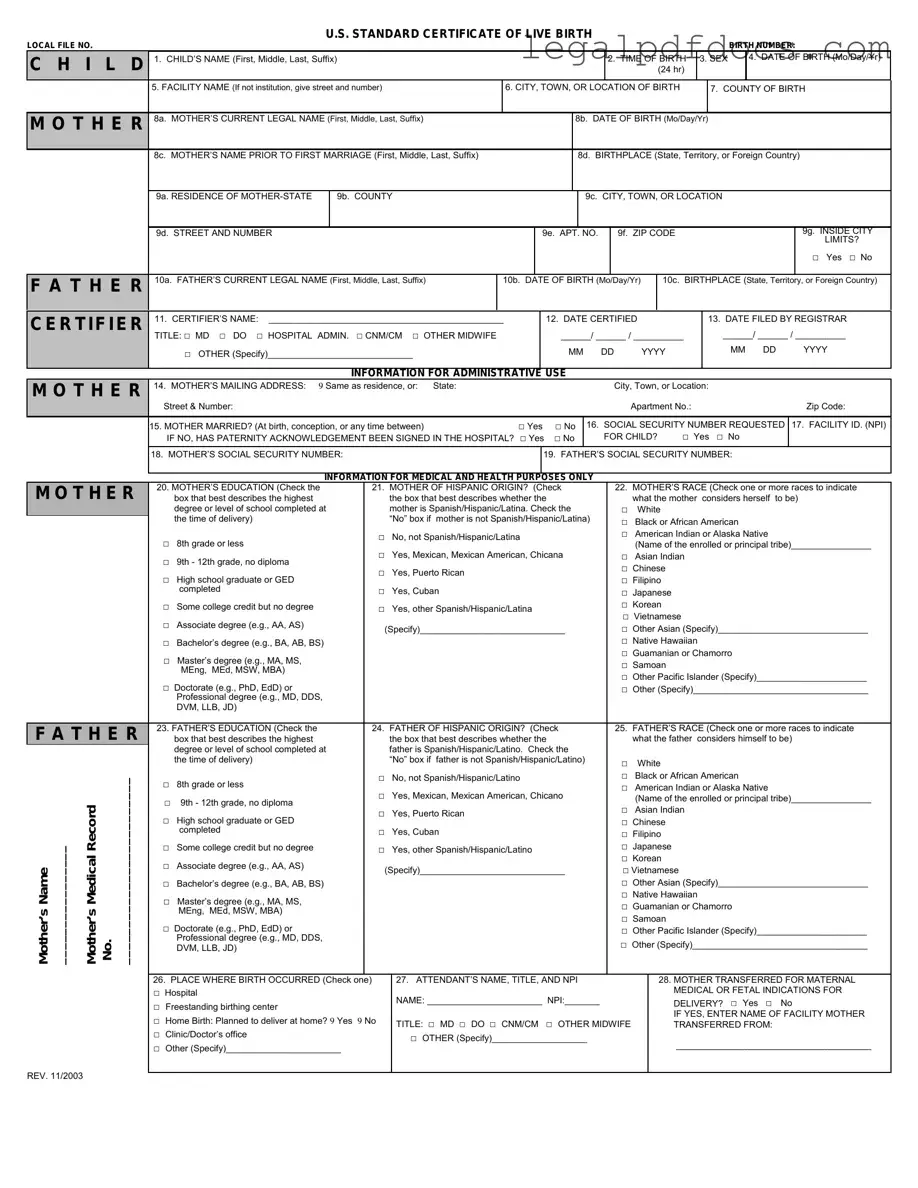Fill Out a Valid CDC U.S. Standard Certificate of Live Birth Template
The CDC U.S. Standard Certificate of Live Birth form is an official document used to record the birth of a child in the United States. This form captures essential information about the newborn, including their name, date of birth, and parents' details. Understanding how to properly fill out this form is crucial for ensuring accurate record-keeping and access to vital services.
Ready to complete the form? Click the button below to get started!
Open CDC U.S. Standard Certificate of Live Birth Editor Here
